SIMA is well-known for its innovation awards, and with 127 applicants, the competition was tough, according to the event organisers. The judging criteria were based on innovation and the value added to the industry, and the jury was not influenced by price or company profiles. This meant every innovation had a chance to win. The biennial event will next be held in Paris from 26 February to 2 March 2017.
Gold medal winners
Two of the premier tyre manufacturers won the only gold medals at SIMA. Tyres are vital to support the weight of the machines and transfer power to the ground. The tyre also has a role to play in protecting the soil. It seems if these two designs teamed up, the perfect tyre could be made available.
Gold: Michelin EVOBIB
Michelin believes this tyre is revolutionary, the first big step forward since the introduction of the radial tyre itself.
The manufacturer says this tyre is for farmers looking for results in two key areas of farm transport – maintaining the soil and delivering good performance when travelling on roads. With this new two-in-one tyre, farmers can move from field use to road use with no compromise, according to Michelin. At the recommended pressure on the road, only the central portion of the tread pattern is in contact with the ground. This portion is specifically designed to target road performance (low rolling resistance and good performance). This zone is driven by the top belt, which is the tread pattern. Michelin says road performance is similar to that of a radial tyre, with a pattern specially designed to ensure continuous rolling with no vibration, for greater driving comfort.
In the field, working at low pressures, the tyre’s footprint spreads across a wider surface, boosting traction while improving soil protection. Compared with a Michelin AxioBib tyre of the same dimensions, the two-in-one tyre demonstrated a 20% increased ground contact patch. Field pressure is one of the lowest on the market; it can go as low as 0.6 bar. At low pressure, the outside portion of the tyre lugs expand to the ground due to a hinge effect. This effect is provided by the new belt’s innovative design and its combination of materials.
When the lugs expand, the contact area is quite significantly increased compared with a traditional radial design. At work, sliding is limited; the surface soil being sheared is spread under all the studs, which is better for the soil. The Michelin EVOBIB tyre is the first radial tyre whose contact area expands when the pressure drops.
The manufacturer claims there is a 20% to 50% increase traction. The tyre is really suitable for a machine with a central inflation system. Available in 2017, the tyre will be offered initially in 710 and 650 tyre sizes.
Gold: Trelleborg VIP System
This system, developed in partnership with Fendt, regulates the tyre pressure according to the actual load of a combine during harvesting. It adapts the tyre’s footprint to stay constant in the soil depending on the load carried by the tyre. With no action needed from the driver, the tyre pressure adjusts automatically, to reduce soil compaction. When the hopper is being emptied, the valve opens, and the pressure falls to the new load pressure setpoint, giving a wider footprint. This value may be half the working pressure under load, according to Trelleborg, which is of sizeable interest in terms of protecting the soil. While harvesting, as the hopper is gradually filled, the compressor raises that value to the original setpoint. The system consists of a set of sensors measuring displacement, pressure, and temperature. An electrical device controls a compressor and a valve to adjust the pressure. The compressor is mounted on the tyre’s rim. Trelleborg appears to provide a solution for virtually every all-terrain vehicle maker that has to manage tyre-ground interface in terms of increasing traction or reducing soil compaction. All of the components fit inside the rim. The kit is fully autonomous and free from the complex and fragile connections of compressed air and rotating joints. The upshot of this idea is the advantage of total right-left independence. Adopting such automation, VIP (Variable Inflation Pressure) may provide an alternative to investing in a track train system.
Case IH is pitching the Autonomous Magnum cabless tractor at key moments in the year, such as preparation and sowing. Working constraints mean that extra workers are required for these peak periods. Case IH believes this tractor can reduce the demand for labour without compromising on performance in the field. The concept is a cabless wheeled tractor that can operate autonomously in the field, with a wide range of Isobus tools. Case says this tractor combines the latest breakthroughs in orientation mapping, telemetry, data sharing and agronomic management to provide managers of agricultural enterprises with additional working capacity.
The autonomy of the tractor and the associated Isobus toolkit make it possible to work independently, day or night. On this tractor, based on a Case IH Magnum tractor in the line, removing the cab offsets the additional technology to make it work autonomously. With interactive interface for PC or tablet, the operator can remotely supervise pre-programmed operations.
The on-vehicle system tracks the most efficient trajectories depending on the soil and the attachment, any obstacles, and any other machinery being used in the same field. Using radars, LiDAR, and on-vehicle cameras, the vehicle can detect obstacles and stop by itself, until the operator, alerted by the audio and visual signals, assigns it another path.
The vehicle will also stop immediately if the GPS signal or position data are lost, or the manual stop button is pressed. Changes can be made to the machine’s tasks in real time, with remote interface or automatic weather alerts. This tractor will be on the Case IH stand at SIMA, yet its working life will undoubtedly start in the US, where the legislation on using driverless tractors is moving a lot faster than in Europe. If needed in exceptional circumstances, there is an actual driving pod located to the rear of the tractor. Case IH says this may be used for attaching implements and when GPS signal completely fails.
JCB, like many more manufacturers, is realising that some of its machines’ lives are spent hauling on the road.
Currently available transmissions on telescopic farm forklifts are mechanical, Powershift, hydrostatic, or continual variation 100% hydrostatic. About 60% of the time, they are used for low-speed applications like pallet handling, livestock feed and forage, or loading grains or manure.
For these low-speed uses, the hydrostatic transmission is the most suitable because it’s flexible and transfers lots of torque at low speed, according to JCB.
It also makes for gentle reverses in direction, active hydrostatic braking, and independent engine speed and RPM.
However, these machines spend 40% of their time on the road, relocating or towing a trailer. For this type of application, mechanical transmissions that feature full-throttle shifting, known as Powershift, are ideal, because they provide energy efficiency along with great traction strength when shifting, during which time there no interruption in the power is being transferred to the wheels.
The JCB DualTech VT transmission combines the best of these two worlds, with a hydrostatic module operating from 0-19km/h and a direct three-ratio Powershift module from 19-40km/h. Shifting gears is fully automated from 0-40km/h.
In addition, with the hydrostatic module, the engine power and forward drive speed can be controlled independently in Flexi mode. It also has two operating modes – ECO and POWER – to adapt the transmission’s operation to the application.
John Deere has upped the performance of automatic lubrication systems by giving it smart control. John Deere’s Smart AutoLube system lubricates with a single station for (at least) four independent sections, the greasing points of the tractor and its attachments.
From the cab, the user can select the operating mode (manual, automatic, custom), adjust the settings, and monitor the work. In automatic or custom mode, the grease is distributed according to the equipment’s use. Instructions are sent to the system from pre-entered data and decision rules and variables that are continuously measured. In manual mode, the user can perform lubrication in special circumstances (eg, after washing the equipment before storage). John Deere believes that technical features, user comfort and access to the different modes and configurations make for optimal use of the equipment (tractors and toolkit) with reduced maintenance costs and less risk of losing resale value on them.
For customers, there are many pluses, according to Deere: optimised lubrication; in-cabin control and reduced risk of accidents for access to the grease nipples; less down time for lubrication, and zero omission of grease nipples; more easily scheduled preventative maintenance; tracking and control of lubricant consumed, by section, with reduced excess; reduced frequency and costs of replacing pivot points due to a nearly 30% reduced risk of abrasion.
New Holland and Case IH essentially have the same technology, and entered them separately into the competition. SIMA officials explained that each tractor deserved the award, with no bias towards the colour or parent company.
New Holland did, however, decide to leave the cab on their version to make it suitable for road use and save the driver from the weather.
The NHDrive autonomous tractor combines the technologies that it can use to work without a driver in the field, while offering the versatility of a traditional tractor during transport or an activity requiring the driver’s undivided attention, says New Holland.
The tractor can detect and analyse the direct environment in real time, while taking into consideration the condition and performance level of the tractor’s essential components, as well as the toolkit’s, to fully automate the tasks defined by the farmer.
It becomes possible for users to manage work remotely from the farm office or from another tractor working in the same field.
The NHDrive concept is based on specific developments that involve the following innovative technologies: a planner to create the optimal trajectories within a field; sensors to analyse the environment (LiDAR, radar and cameras); information coming from the equipment to adjust settings as needed.
Based on the Kastor hedge cutter, the E-Kastor combines an electric power transfer system for the shredder head, while keeping hydraulic control of the moving jacks (control that uses the tractor’s hydraulic oil).
Installation of an electric power transfer system on to a side-mounted hedge cutter is the result of an environmentally-friendly design, which gives users equipment that uses less energy, with better yield from the linkage, and meets the demand for energy transition.
This electric system transmits the mechanical power of the tractor’s power take-off to the shredder head by means of a generator paired with an electronic device.
The rotor turns thanks to electricity, while the cooling of the electric power components is performed by a 50/50 mixture of water and glycol. This design, which combines an electric power system with the tractor’s hydraulics, means the oil reservoir is not needed, as is the case with a hydraulic motor rotor.
The system uses two identical synchronous machines. One is used as an electric generator, towed by the tractor’s power take-off, and the other is used as a motor to drive the shredder head rotor. Each of these two synchronous machines is paired with a power inverter.
The first one provides steady voltage to the generator, by adapting the intensity to power requirements, while the other one controls the rotor’s motor speed within an operating range of 0-4,000 turns/minute. A resolver cable provides the controls as well as the return of information such as speed, operating power, and temperature.

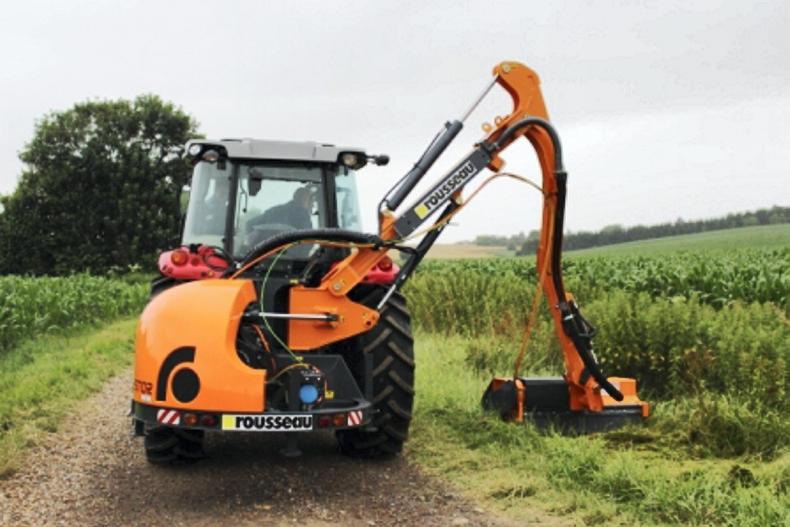




 This is a subscriber-only article
This is a subscriber-only article







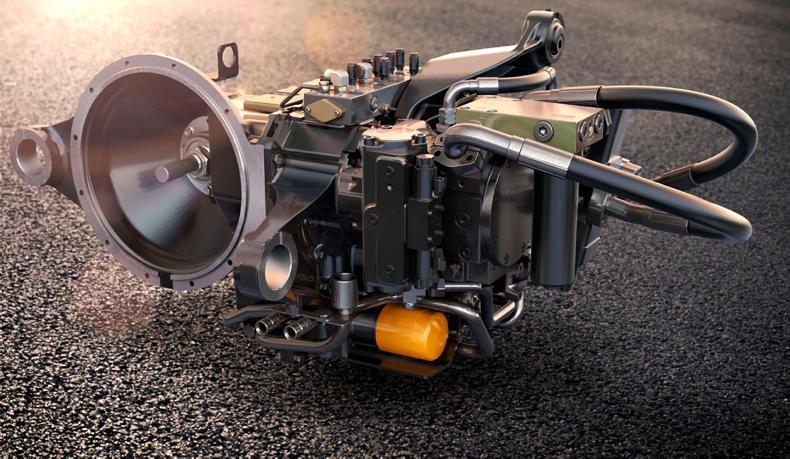
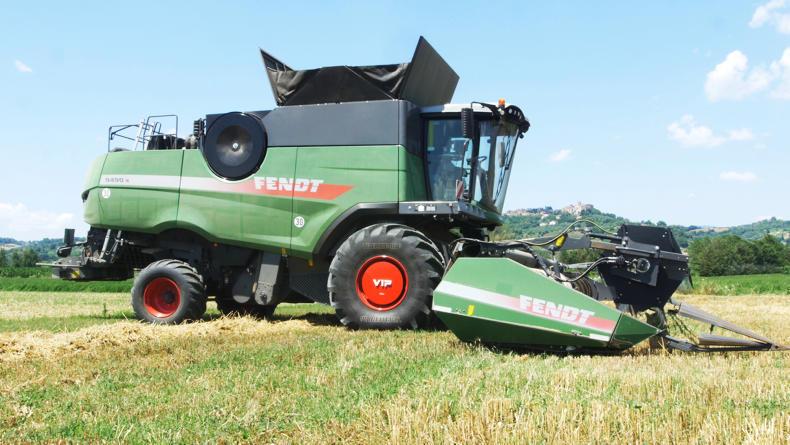
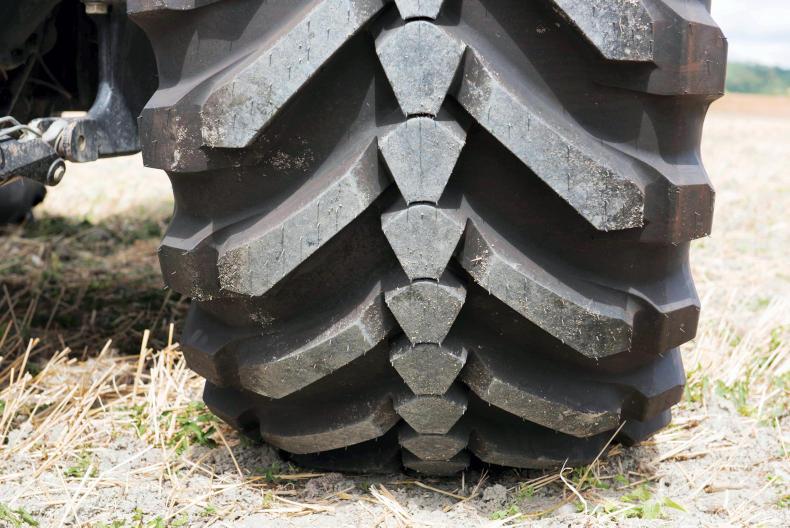
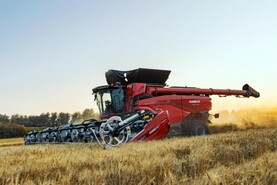
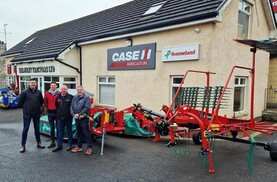
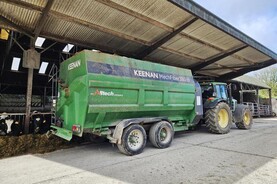
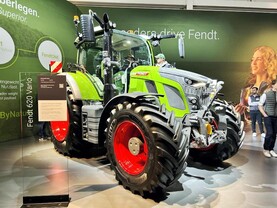
SHARING OPTIONS: